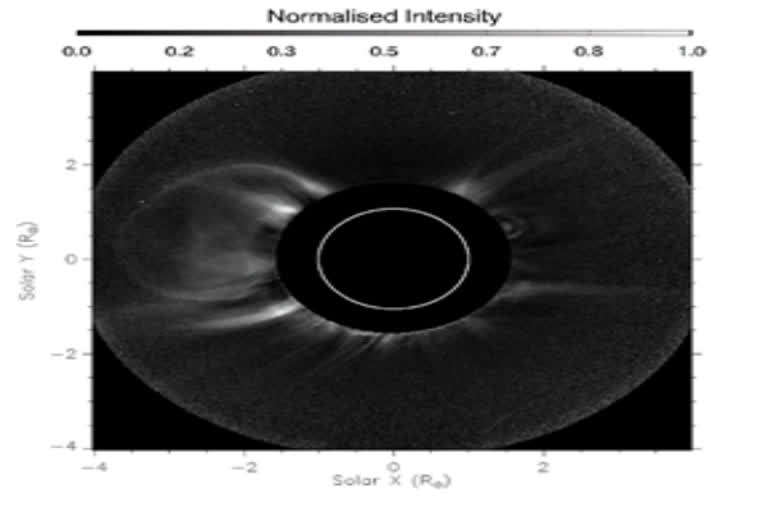New Delhi: A simple image-processing technique developed by Indian scientists and researchers to understand the dynamics of Solar corona can help detect Coronal Mass Ejections better, says the government.
Indian scientists have developed a simple technique of separating the constant background of the Solar corona that reveals the dynamic corona of the Sun.
Coronal mass ejections (CMEs) are dynamic structures in the Solar corona that are capable of driving and changing the space weather in near-earth regions.
According to officials, it is important to understand and separate such structures and visually or automatically identify the Sun’s coronal mass ejections through the radial distances in the images taken by the use of an instrument called coronagraphs.
A new method developed by four Indian scientists Ritesh Patel, Dr Vaibhav Pant and Professor Dipankar Banerjee of Aryabhatta Research Institute of Observational Sciences (ARIES), Nainital, along with Satabdwa Majumdar from the Indian Institute of Astrophysics (IIA), Bengaluru, autonomous institutes under the department of science, which called the Simple Radial Gradient Filter (SiRGraF), is capable of separating the background revealing the dynamic corona.
This research by the Indian scientists has been accepted for publication in the Solar Physics journal.
Officials said this simple approach of subtracting the constant background can improve the efficiency of identification of Coronal Mass Ejections (CME) events in which a large cloud of energetic and highly magnetised plasma erupts from the Solar corona into space.
Coronal mass ejections (CMEs)
These coronal mass ejections cause radio and magnetic disturbances on the earth. And they can disrupt the telecommunications networks and interfere with the working of satellites in space.
This new technique developed by Indian scientists can also give a clear picture of the characteristics of CMEs and make their study easier.
The density of the outermost layer of the atmosphere of the Sun corona decreases with distance radially outwards.
As the intensity of the corona observed in white light depends on the density of particles in the atmosphere, it decreases exponentially. If the contrast between the constant corona and transient coronal mass ejections is not high, detection of the CMEs becomes a challenge for scientists.
This method developed by Indian scientists, which subtracts the constant background, brings out the transient corona, followed by dividing the result by an azimuthally uniform background to reduce the radial decrease in intensity.
According to officials, a combination of these two steps allows scientists to identify the structures such as CMEs throughout the field of view of the coronagraph images.



